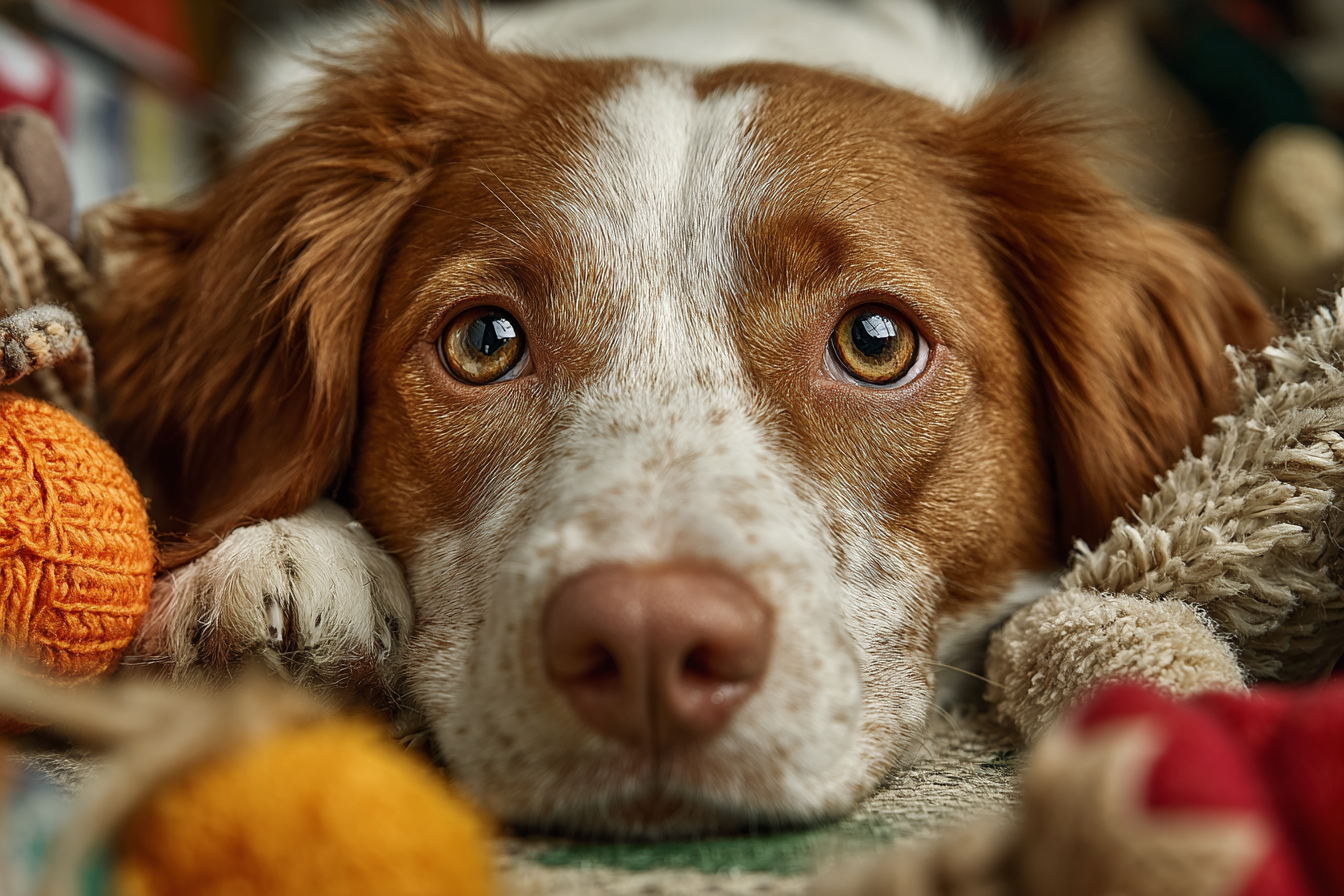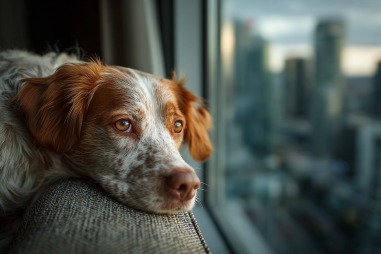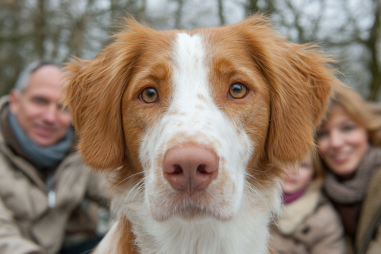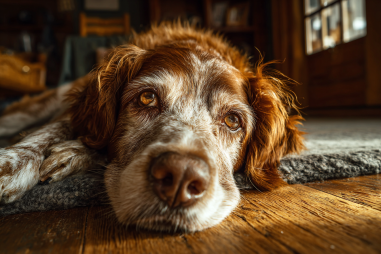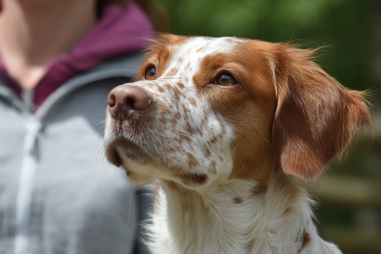Brittany dogs are lively, affectionate companions well known for their intelligence and enthusiasm. However, like many dogs, Brittanys can sometimes develop separation anxiety, which can lead to stress and behavioral challenges when left alone. This condition can be heart-wrenching to witness and frustrating to manage, but the good news is that with the right techniques and understanding, you can help your Brittany cope peacefully with alone time. In this article, we’ll explore effective solutions to manage separation anxiety in Brittany dogs, covering early signs, training strategies, environmental enrichments, calming aids, and when you might need expert assistance.
Recognizing the Signs of Separation Anxiety in Brittany Dogs
Before you can manage separation anxiety, it’s important to be able to identify its symptoms. Brittanys are naturally social and bond closely with their families, so behaviors that arise when you leave can be telling. Common signs include:
- Excessive Vocalization: Barking, whining, or howling persistently when alone.
- Destructive Behavior: Chewing furniture, scratching doors, or damaging household items.
- Restlessness and Pacing: Moving anxiously around the house or scratching at doors and windows.
- Escape Attempts: Trying to break out of crates, rooms, or enclosures.
- House Soiling: Urinating or defecating inside despite being house-trained.
- Excessive Drooling or Panting: Panting and drooling more than usual, linked to stress.
Not all nervous behaviors are caused by separation anxiety, so it’s vital to observe your Brittany’s patterns closely to differentiate anxiety from other potential health or behavior issues.
Preventative Training Techniques for Separation Anxiety
Prevention is often the best approach when it comes to separation anxiety. Early training focused on independence and calmness can significantly reduce anxiety before it develops or worsens. For Brittanys, incorporating the following methods can help foster a secure and self-assured attitude:
- Teach Independent Play: Encourage playtime with toys and puzzles on their own, so your dog learns to enjoy being alone occasionally.
- Practice Short Absences: Gradually increase the time you spend away from your dog starting with just a few minutes. This helps your Brittany get used to your departures without heightened stress.
- Calm Departures and Returns: Avoid over-exciting greetings or goodbyes. This reduces the emotional spike surrounding your coming and going, which can fuel anxiety.
- Create a Safe Space: Designate a comfortable area, like a crate or room, as your dog’s safe haven. Make it inviting with blankets, toys, and access to water.
- Positive Reinforcement: Reward calm behavior with treats and praise so your dog associates your absence with positive outcomes.
Environmental Enrichment to Ease Alone Time
Providing mental and physical stimulation for your Brittany is crucial, especially when you’re not home. Boredom and excess energy can aggravate anxiety symptoms. Some practical environmental enrichment ideas include:
- Interactive Toys and Puzzle Feeders: These challenge your dog’s mind and keep them busy while you’re gone, diverting attention from stress.
- Background Noise: Leaving a radio, TV, or white noise machine on can create a soothing ambiance that drowns out sudden noises that could trigger anxiety.
- Window Views or Elevated Perches: Allowing your dog to look outside safely satisfies natural curiosity and can soothe restlessness.
- Comfort Items: Providing worn clothing or blankets with your scent can provide reassurance during absences.
- Exercise Before Leaving: A long walk or active play session can tire your Brittany physically and mentally, making them more likely to relax while alone.
The Role of Calming Tools and Products
Sometimes, the right calming aids can provide valuable support when managing separation anxiety. While these tools are not standalone solutions, they can complement training and enrichment efforts:
- Adaptil Diffusers and Sprays: Mimicking natural dog appeasing pheromones, they create an environment that helps reduce stress.
- Anxiety Wraps: Products like the Thundershirt apply gentle pressure, which can calm nervous dogs through tactile stimulation.
- Natural Supplements: Ingredients such as chamomile, valerian root, and CBD oil (consult your vet first) may help promote relaxation.
- Comforting Music: Specially composed music for dogs can soothe anxiety and encourage restfulness.
- Calming Treats: Treats formulated with calming ingredients can be part of a positive reinforcement strategy.
Recognizing When to Seek Professional Help
In cases where separation anxiety is severe or persistent despite your best efforts, professional intervention can be essential. Signs that it’s time to consult a vet, dog trainer, or animal behaviorist include:
- Destructive behaviors causing injury or property damage consistently.
- Aggression or extreme panic during departures.
- Physical symptoms like excessive drooling, vomiting, or shaking related to anxiety.
- Lack of improvement after implementing training and enrichment strategies.
Professionals can offer tailored behavior modification plans, medication options, or specialized therapies such as cognitive behavioral therapy or counter-conditioning to address your Brittany’s unique needs.
Implementing Gradual Desensitization Plans
One of the most effective approaches to reducing separation anxiety is gradual desensitization. This method involves slowly exposing your Brittany to triggers of anxiety in manageable doses, paired with positive reinforcements, to build tolerance and comfort. A typical desensitization plan may look like:
- Step 1: Begin by picking up your keys or putting on your coat without leaving the house, then reward calm behavior.
- Step 2: Progress to stepping out the door for a few seconds, then immediately return and reward.
- Step 3: Slowly increase the duration of your absences, always returning before anxiety escalates and providing praise or treats.
- Step 4: Incorporate distractions during your absence, such as interactive toys or calming music, to help your dog associate solitude with positive experiences.
The key is patience and consistency. Each step should be maintained for several days or weeks depending on your dog’s response before moving on. This gradual approach helps retrain their emotional response to being alone.
Managing separation anxiety in your Brittany dog takes a thoughtful combination of observation, training, enrichment, and sometimes external assistance. By watching for early warning signs, building positive independent behaviors, providing a rich environment, and thoughtfully using calming techniques, you can help your loyal companion feel confident and relaxed when you’re away. Remember that every dog is unique, and what works best may differ, but your commitment to their well-being will make all the difference in fostering a happy, anxiety-free relationship.

